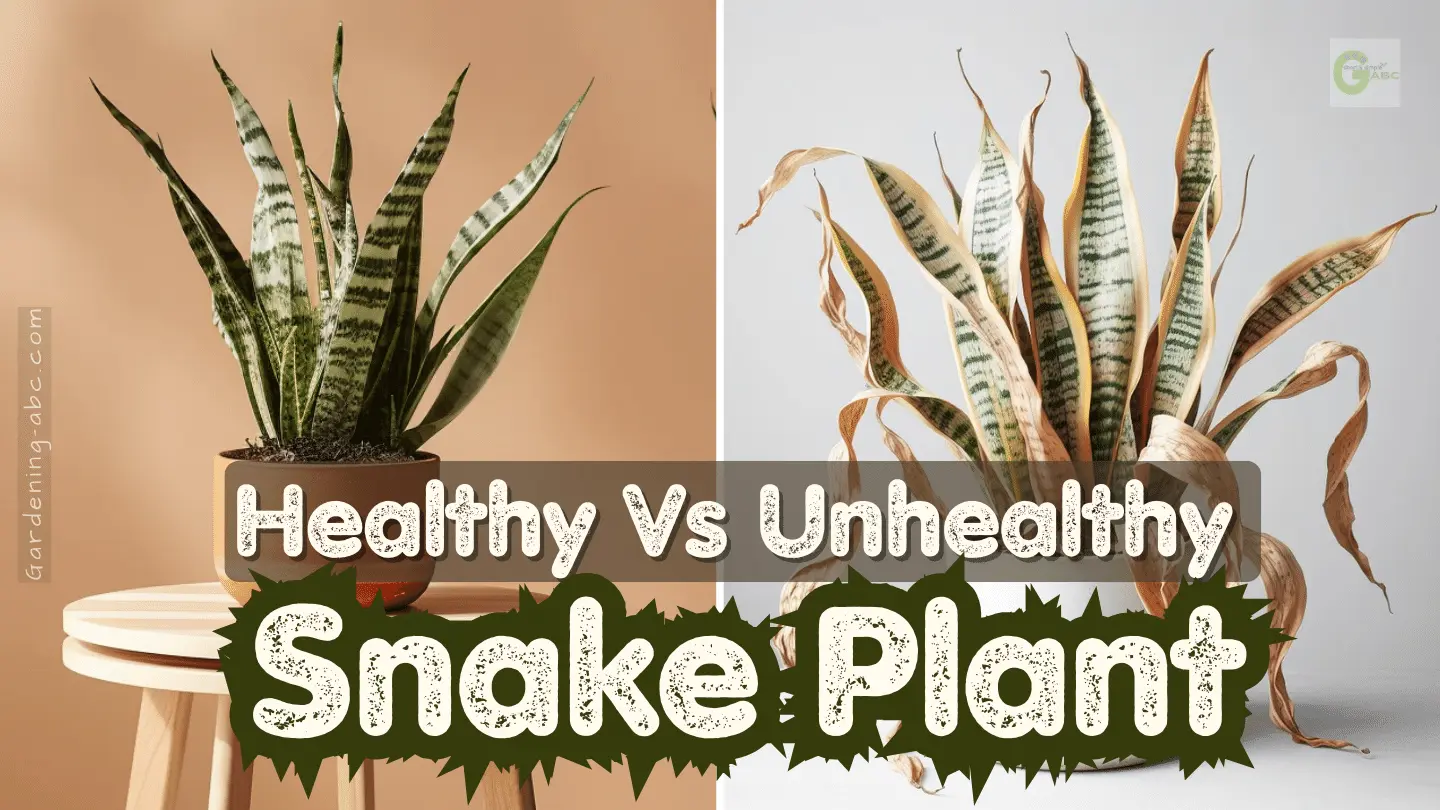We use affiliate links to run our site. When you buy through links on our site, we may earn an affiliate commission, without any added cost to you. Learn more
Snake plants are popular houseplants known for their low maintenance and air-purifying qualities. However, differentiating a healthy snake plant from an unhealthy one can be tricky.
in this post, we will discuss how to find out if your snake plant is healthy or not. We will also discuss how to keep your plant healthy and share some useful tips.
So let’s begin.
Healthy vs. Unhealthy Snake Plant
A Healthy Snake Plant
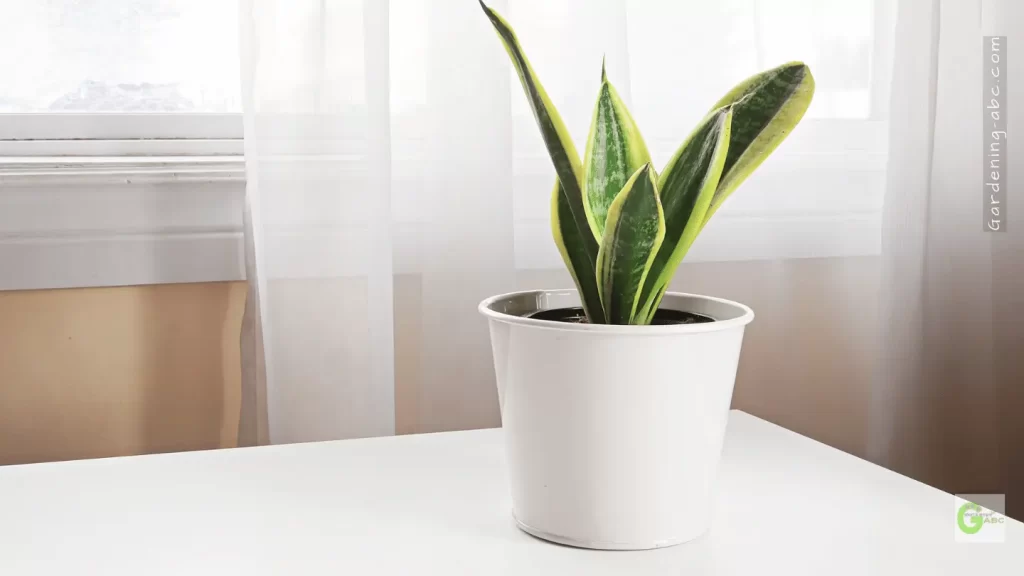
A thriving, healthy snake plant exhibits vibrancy and vitality, featuring thick, deep-green leaves free of any brown or yellow spots.
Its leaves maintain a straight posture, with smooth edges that are slightly pointed, akin to the sharpness of a cactus (albeit milder).
Additionally, a robust root system firmly grounded in moist, but not saturated, soil characterizes a healthy snake plant. Pests or diseases are notably absent from such a plant.
The Rare and Fascinating World of Snake Plant Flowers
An Unhealthy Snake Plant
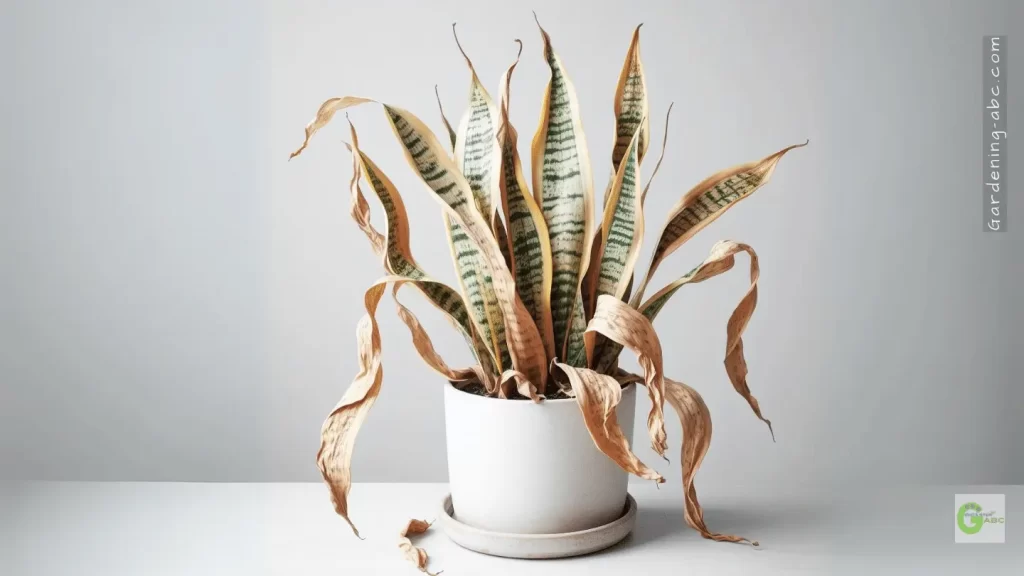
Conversely, an unhealthy snake plant mirrors a weakened state, displaying thin, pale-green leaves adorned with unsightly brown or yellow spots.
Wilted or crooked leaves and a feeble root system, either inadequately grounded or in consistently waterlogged soil, typify an unhealthy plant.
Signs of pests or diseases, resembling the distress of an ailing being, might manifest as mold, mildew, or insects.
How to Find If A Snake Plant Is Unhealthy?
| Point of Comparison | Healthy Snake Plant | Unhealthy Snake Plant |
|---|---|---|
| Appearance | Thick, deep green leaves with smooth, even edges. No spots. Leaves upright and straight. | Thin, pale leaves with brown/yellow spots. Leaves may be crooked, wilted, drooping. |
| Growth | Fast-growing, survives with little water. Tolerates low light. | Stunted growth, wilting. Signs of distress like yellow leaves. |
| Smell | Neutral smell, no foul odors | Roots may have a musty or unpleasant smell. |
| Pests/Diseases | Very resistant | May show signs of infestations or infections |
| Roots | Strong, white, plump roots firmly in soil. Even distribution. | Discolored, wilted. Dry, brittle or slimy. Signs of rot. |
1. Appearance
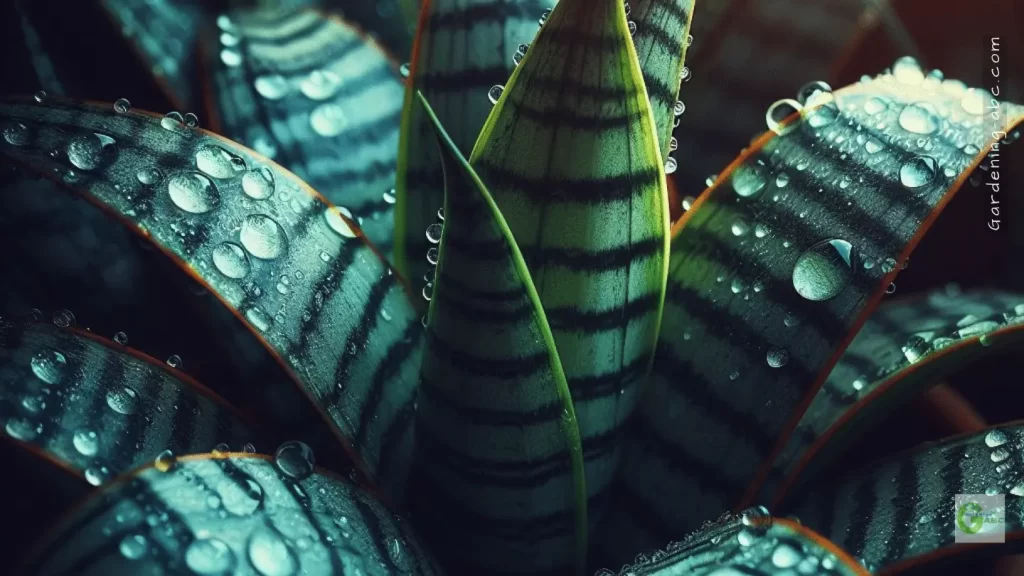
Check the Leaf Coloring:
- Healthy: Leaves should be bright green, even if variegated.
- Unhealthy: Leaves may be bleached from too much sun or grow light, browned, or have other signs of discoloration.
Feel the Texture of the Leaves:
- Healthy: Leaves should be firm and smooth.
- Unhealthy: Leaves may be crispy and brittle (dehydrated) or mushy and soft (overwatered or diseased).
Measure the Plant’s Height:
- Healthy: Snake plants should grow steadily over time.
- Unhealthy: No growth or stunted growth can indicate problems.
Review the Leaf Shape:
- Healthy: Leaves should be upright and firm.
- Unhealthy: Drooping leaves can indicate overwatering, lack of sunlight, or disease.
Examine the Stems:
- Healthy: Stems should be firm and green.
- Unhealthy: Soft, mushy, or blackened stems can indicate disease.
A healthy snake plant boasts several thick, upright leaves with a glossy surface and varying shades of green. Contrarily, an unhealthy plant may showcase drooping, wilted leaves with patches of yellow or brown, devoid of the characteristic sheen.
2. Growth
Thriving snake plants exhibit rapid growth and withstand minimal watering, thriving best in bright, indirect sunlight. Unhealthy signs include stunted growth, yellowing, or brown leaves, often attributed to overwatering or insufficient light levels.
3. Smell
Healthy snake plants exude a neutral scent while the roots of an unhealthy plant might emanate a musty, unpleasant odor, often triggered by factors like overwatering, inadequate drainage, low light, or pests.
4. Pests and Diseases
Resilient against pests and diseases when healthy, snake plants can fall prey to spider mites, mealybugs, or infections when unhealthy. Identifying signs like webs, white bugs, or leaf discoloration is crucial for immediate treatment.
5. Root System
A healthy root system in a snake plant exhibits strength, a plump white appearance, and a fibrous texture. Unhealthy roots may display discoloration, wilting, sliminess, or overcrowding, signaling potential issues like rot or confinement.
Some Common Problems and Their Solutions:

Here are some common issues you may encounter and how to fix them:
Problem: Brown leaves
- Cause: Overwatering, underwatering, too much sun, or disease.
- Solution: Adjust watering schedule, provide more or less sunlight, and treat disease with fungicide
Problem: Mushy leaves
- Cause: Overwatering, disease (southern blight).
- Solution: Repot in well-draining soil, remove diseased foliage, treat with fungicide
Problem: No growth
- Cause: Lack of sunlight, overwatering, underwatering, or disease.
- Solution: Provide more sunlight, adjust watering schedule, treat disease
Problem: Drooping leaves
- Cause: Overwatering, lack of sunlight, or disease.
- Solution: Repot in well-draining soil, provide more sunlight, treat disease
Tips for Taking Care of Your Snake Plant
Watering:
- Wait until the top inch of soil dries completely before watering your snake plant. Overwatering is the most common mistake people make with these plants and can lead to root rot.
- Use room-temperature water and soak the soil thoroughly. Allow the excess water to drain out of the pot before returning it to its saucer.
- Avoid getting water on the leaves, as this can cause them to rot.
Light:
- Snake plants prefer bright, indirect sunlight. They can tolerate low light conditions, but they will not grow as well.
- Avoid placing your snake plant in direct sunlight, as this can scorch the leaves.
- Rotate your snake plant every few weeks to ensure that all sides of the plant receive even light exposure.
Temperature:
- Snake plants are susceptible to cold damage. Protect them from temperatures below 50°F (10°C).
- If you live in a climate with cold winters, be sure to bring your snake plant indoors before the first frost.
Fertilizer:
- Snake plants do not require a lot of fertilizer. Apply a balanced fertilizer sparingly during the growing season (spring and summer).
- Follow the instructions on the fertilizer label and be sure not to overfertilize.
Leaf Cleanliness:
- Maintain leaf cleanliness by gently wiping off dust and debris with a damp cloth. This will help the plant to photosynthesize more efficiently.
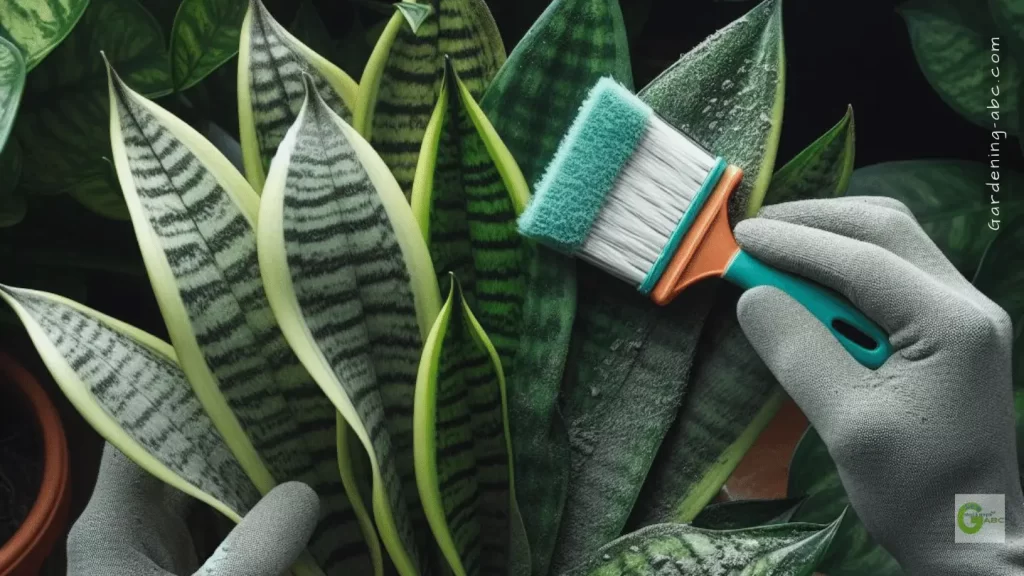
Repotting:
- Snake plants grow slowly and do not need to be repotted often. Repot every 2-3 years or when the plant becomes pot-bound.
- When repotting, choose a pot that is only one size larger than the current pot. Use a well-draining potting mix.
What Causes Brown Spots on Snake Plants? – 6 Main Reasons and How to Prevent Them
Pruning:
- Prune yellow or dead leaves promptly to prevent disease spread. Use sterilized pruning shears to make clean cuts.
The Secret to Easy Snake Plant Propagation:
Pests and Diseases:
- Snake plants are relatively resistant to pests and diseases. However, they can be susceptible to spider mites, mealybugs, and scale insects.
- Be sure to inspect your snake plant regularly for any signs of pests or diseases. Treat them immediately upon detection with a suitable insecticide or fungicide.
Frequently Asked Questions
How often should I water my snake plant?
Water your snake plant only when the top inch of soil feels dry to the touch, typically every 2-6 weeks depending on environmental conditions.
What causes an unpleasant odor in snake plants?
An unpleasant odor in snake plants can stem from overwatering, poor drainage, insufficient light, or pest infestations.
How can I maintain a healthy root system in my snake plant?
Ensure well-draining soil, proper watering habits, adequate light, and periodic repotting to foster a healthy root system in snake plants.
What are common signs of an unhealthy snake plant?
Yellow or brown spots on leaves, wilting, stunted growth, foul odor, and signs of pests or diseases typically indicate an unhealthy snake plant.
Amazon and the Amazon logo are trademarks of Amazon.com, Inc, or its affiliates.

Hi there! My name is Prasenjit and I’m an avid gardener and someone who has grown a passion for growing plants. From my hands-on experience, I have learned what works and what doesn’t. Here I share everything I have learned.
